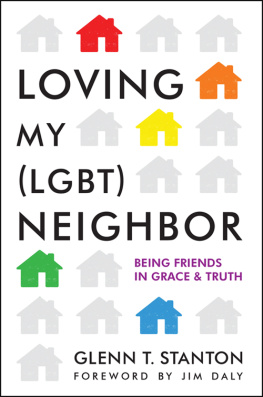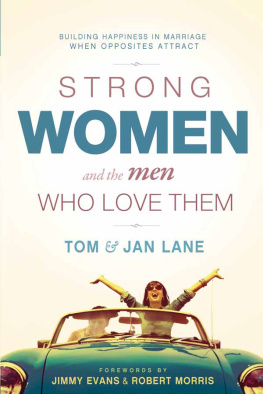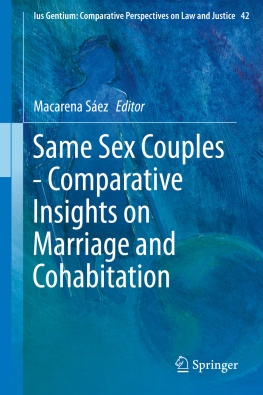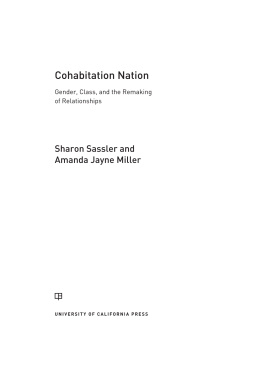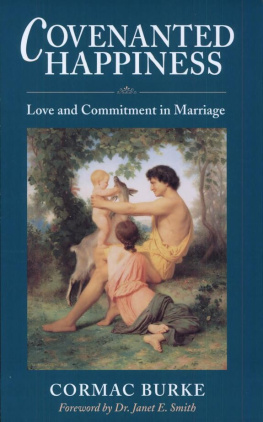Christians believe traditional marriage matters because it is outlined for us in the pages of sacred Scripture. But guess what? Science, reason, and history are also on our side. In this excellent book, my friend Glenn Stanton explains how all of these roads point to the importance of marriage.
J IM D ALY , president, Focus on the Family
Cohabitation is growing in popularity across the United States as a way for couples to enjoy ready access to sex, to test drive their relationship, and even to have children together. Despite its current popularity, The Ring Makes All the Difference tells us two hard truths: cohabitation puts adults at risk for marital failure and children at risk of being exposed to a relational merry-go-round that all too often ends in neglect or abuse.
W. B RADFORD W ILCOX , director of National Marriage Project at the University of Virginia
This is an engaging and highly readable book describing why the ring matters. Glenn Stanton explains why marriage is different from other relationships like cohabitation, and how marriage benefits adults and children by signifying clarity about the nature of the commitment between two partners. It is both an important and a useful book.
S COTT M. S TANLEY , research professor, University of Denver, author, The Power of Commitment
LOVED this book! An easy and insightful must-read for anybody thinking about living together or getting married as well as those working with young couples as pastors, counselors, or mentors.
J ULIE B AUMGARDNER , president and executive director of First Things First
THE RING
MAKES ALL THE
DIFFERENCE

The Hidden Consequences
of Cohabitation and the
Strong Benefits of Marriage
GLENN T. STANTON
M OODY P UBLISHERS
CHICAGO
2011 by
G LENN T. S TANTON
All rights reserved. No part of this book may be reproduced in any form without permission in writing from the publisher, except in the case of brief quotations embodied in critical articles or reviews.
All Scripture quotations, unless otherwise indicated, are taken from the Holy Bible: New International Version. NIV. Copyright 1973, 1978, 1984 by Biblica, Inc. Used by permission of Zondervan. All rights reserved worldwide.
Websites and phone numbers listed herein are accurate at the time of publication, but may change in the future or cease to exist. The listing of website references and resources does not imply publisher endorsement of the sites contents. Groups, corporations, and organizations are listed for informational purposes, and listing does not imply publisher endorsement of their activities.
Names have been changed to protect privacy.
Edited by Andy Scheer
Interior design: Ragont Design
Cover design: Maralynn Rochat
Cover images: Shadowed Ring: 3D Model, Maralynn Rochat
Library of Congress Cataloging-in-Publication Data
Stanton, Glenn T.
The ring makes all the difference : the hidden consequences of cohabitationand the strong benefits of marriage / Glenn T. Stanton.
p. cm.
Includes bibliographical references.
ISBN 978-0-8024-0216-5
1. Unmarried couples. 2. Unmarried couplesReligious aspectsChristianity. 3. Marriage. 4. MarriageReligious aspectsChristianity. I. Title.
HQ803.5.S73 2011
306.841dc22
2011015751
We hope you enjoy this book from Moody Publishers. Our goal is to provide high-quality, thought-provoking books and products that connect truth to your real needs and challenges. For more information on other books and products written and produced from a biblical perspective, go to www.moodypublishers.com or write to:
Moody Publishers
820 N. LaSalle Boulevard
Chicago, IL 60610
1 3 5 7 9 10 8 6 4 2
Printed in the United States of America
Affectionately dedicated to my brother Todd,
his remarkable wife, Leslie,
and
their beautiful kids, Joshua and Lauren.
They allowed me to cohabit with them
at their home in Florida
during an enjoyable, monthlong writing sabbatical
to write this book.
Thank you, guys!
CONTENTS
WHEN we see the statistics ,
we are scared witless at the possibility
of failing at what we want so badly:
marriage. So it makes it hard
for us to make the plunge.
COHABITATION
NATION
Come live with me and be my love,
And we will some new pleasures prove
Of golden sands and crystal brooks
With silken line, and silver hooks
Theres nothing that I wouldnt do
If you would be my POSSLQ.
You live with me, and I with you,
And you will be my POSSLQ.
Ill be your friend and so much more;
Thats what a POSSLQ is for.
And everything we will confess;
Yes, even to the IRS.
Some day on what we both may earn,
Perhaps well file a joint return.
Youll share my pad, my taxes, joint.
Youll share my life, up to a point!
And that youll be so glad to do,
Because youll be my POSSLQ.
COULD YOU BE A POSSLQ?
A S A NEW FORM OF SEXUAL and domestic relationship started to take hold in Western cultures in the 1970s, the US Census Bureau coined a new termPOSSLQ (pronounced poss-el-cue)to speak of Persons of Opposite Sex Sharing Living Quarters. So the famously bow-tied CBS Sunday Morning commentator Charles Osgood penned this tongue-in-cheek poem. The curious new term described a large and growing segment of conjugal couplehood.
Osgood zeroed in on the primary unique factor of cohabiting relationshipstheir conditional nature: Youll share my life, up to a point! And that youll be so glad to do. This is what cohabitation isa domestic and sexual living arrangement quite different from what a man and woman do when they marry.
But is there any significant difference between the two, besides that one is a legal commitment and the other merely a personal agreement? Does it really matter how couples establish and arrange their relationships? Doesnt it just come down to personal preference and what seems to suit the couple? Isnt it really the couples love that makes the relationship?
These are questions all couples should considerwhether they think they might ever cohabit or not. Finding good answers to them helps us understand the nature of domestic and sexual relationshipssomething most of us find ourselves entering into.
The Ring Makes All the Difference is a careful, practical look at what we know about couples who choose to live together outside of marriageand how this knowledge can help create current and future relationships that are as healthy, fulfilling, and long-lasting as possible. Isnt that what most of us are after?
The good news is that the psychological and social sciences know a great deal about cohabiting relationships, given that we have seen large and socially diverse populations entering such relationships since the late 1960s. For this is what the social sciences need to conduct their research and reach reliable conclusions: (1) large, diverse populations to observe and (2) many decades to observe them.
It would be difficult to overstate how dramatically cohabiting relationships have grown in most Western nations, including the United States. When it comes to the ways men and women today start and organize their domestic lives, cohabitation is the faraway winner in terms of sheer numerical growth. In family formation trends over the past four decades, the increase of unmarried cohabitation has no close rival:


